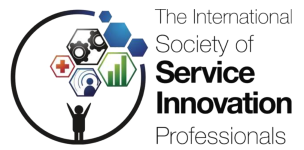 Jorge Cardoso
Jorge Cardoso
Karlsruhe Service Research Institute (KSRI), Karlsruhe Institute of Technology, Karlsruhe, Germany
CISUC, Department of Informatics Engineering, University of Coimbra, Coimbra, Portugal jorge.cardoso@kit.edu, jcardoso@dei.uc.pt
The Linked Unified Service Description Language (Linked USDL or simply USDL was developed for describing business, software, or real world services using machine-readable and machine-understandable specifications to make them tradable on the Internet [1]. Linked USDL takes the form of a normalized schema which is an approach used in many fields to facilitate the exchange of data and integration of information systems. For example, online social networking relies onFOAF to describe people and relationships, and business-to-business systems use ebXML to describe transactions,orders and invoices. On the other hand, USDL enables describing services in a comprehensive way by providing a “commercial envelope” around services covering business, operational, and technical aspects. This makes USDL one of the foundational technologies for setting up emerging infrastructures such as the Internet of Services, Web service ecosystems, and the Future Internet.
Why was USDL build?
In the field of service description, previous efforts were mainly concentrated on developing Interface Description/Definition Languages (IDL) to describe software components interfaces. Well-known examples included WSDL, CORBA, OMG IDL, and Sun ONC RPC IDL [2]. They focused on the description of services which took the form of software interfaces (for example the description of the following interface: int get CustomerID(String name, String zipcode)). Another stream of research added semantics to the descriptions, e.g. OWL-S and WSMO. Nonetheless, the Internet of Services [3] requires services to be traded. This requirement placed emphasis on the need to describe business-related aspects such as pricing, legal aspects, and service level agreements.
How was USDL build?
Linked USDL was build using Linked Data principles. This aspect enabled USDL to inherit many distinctive aspects such as unique addresses on the web via the use of URIs and the description data about services was published in a machine-readable and -understandable format. The rationale behind the use of Linked Data is the requirement that USDL descriptions should be shared between interested parties and linked to other descriptions, standards and formats.
What are the benets of USDL?
While the fields of application of USDL are many and range from service portfolio management, to service design, and to service network analysis, a simple example is the use of USDL as a way to advertise the services that a company offers to its customers. With UDSL, service offerings (e.g. a consulting, maintenance or cloud services) are described and promoted more effectively since the format used is computer-understandable. This means that the cost of service discovery, search and selection for customers (and providers) can be lowered by using (semi)automatized software applications. The use of a computer-understandable representation for services also enables a better integration with existing internal information systems.
How many modules are part of the USDL family?
Currently, Linked USDL is segmented in 4 modules. The objective of this division was to reduce the overall complexity of service modeling by enabling providers to only use the required modules.
- Core. The core module covers concepts central to a service description. It includes, e.g., operational aspects such as interaction points that occur during provisioning and the business entities involved.
- Pricing. The pricing module covers the range of concepts which are needed to adequately describe price structures in the service industry.
- Legal. The legal module provides description capabilities for usage rights.
- Service Level. The service level module covers concepts used by service level agreements such as the specification of agreed conditions, guaranteed states and guaranteed actions for a service delivery.
Where can I find more information?
The following references contain information which can be useful for teachers, students, and organizations:
- Projects. The social Linked USDL web site is available at http://www.linked-usdl.org/. Other information can be found at Genssiz , a research center working on building models and tools for Linked USDL.
- Slides. Search for the keywords “Linked USDL” at SlideShare, the world’s largest community for sharing presentations.
- Papers. Search for the keywords “Linked USDL” at Google Scholar , a freely accessible web search engine that indexes the full text of scholarly literature across may disciplines.
- Documentation. Some documentation on modeling services is available at Genssiz .
- Developments. The current Linked USDL models are available at GitHub. Other models for service systems modeling and domain specfic service modelling are available at http://rdf.genssiz.org/.
Our next goal will be to create a wiki-based platform to enable the community to participate actively by providing input in the form of feedback, instances, service sets, and applications.
If you have any question please feel free to contact us at:
- Jorge Cardoso, jcardoso@dei.uc.pt
- Carlos Pedrinaci, carlos.pedrinaci@open.ac.uk
- Torsten Leidig, torsten.leidig@sap.com
References
- Cardoso, J., Barros, A., May, N., Kylau, U.: Towards a unied service description language for the internet of services: Requirements and first developments. In: IEEE International Conference on Services Computing, Florida, USA (2010)
- Coulouris, G., Dollimore, J., Kindberg, T., Blair, G.: Distributed Systems: Concepts and Design. International computer science series. Addison-Wesley (2011)
- Cardoso, J., Voigt, K., Winkler, M.: Service Engineering for The Internet of Services. In: Enterprise Information Systems X. Volume 19., Springer (2008) 17-25

